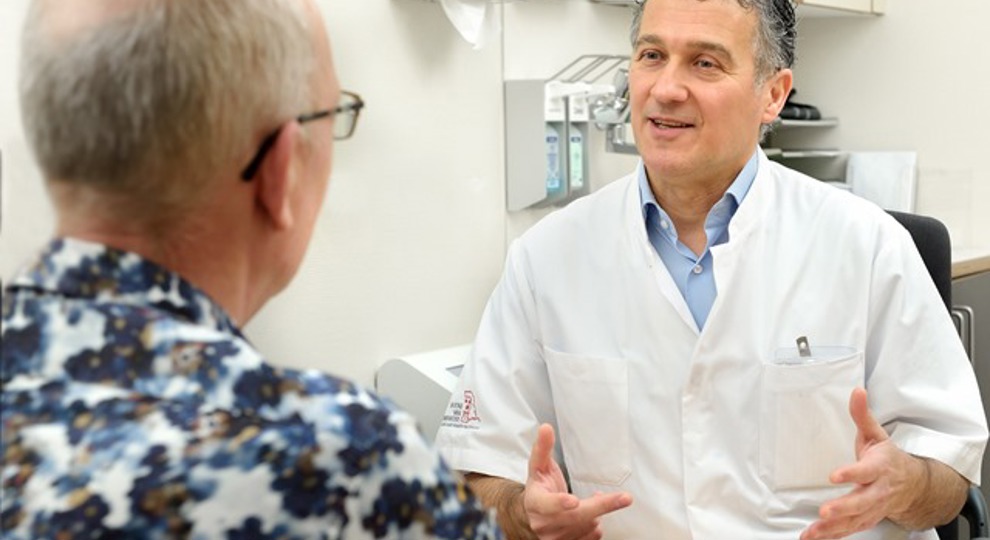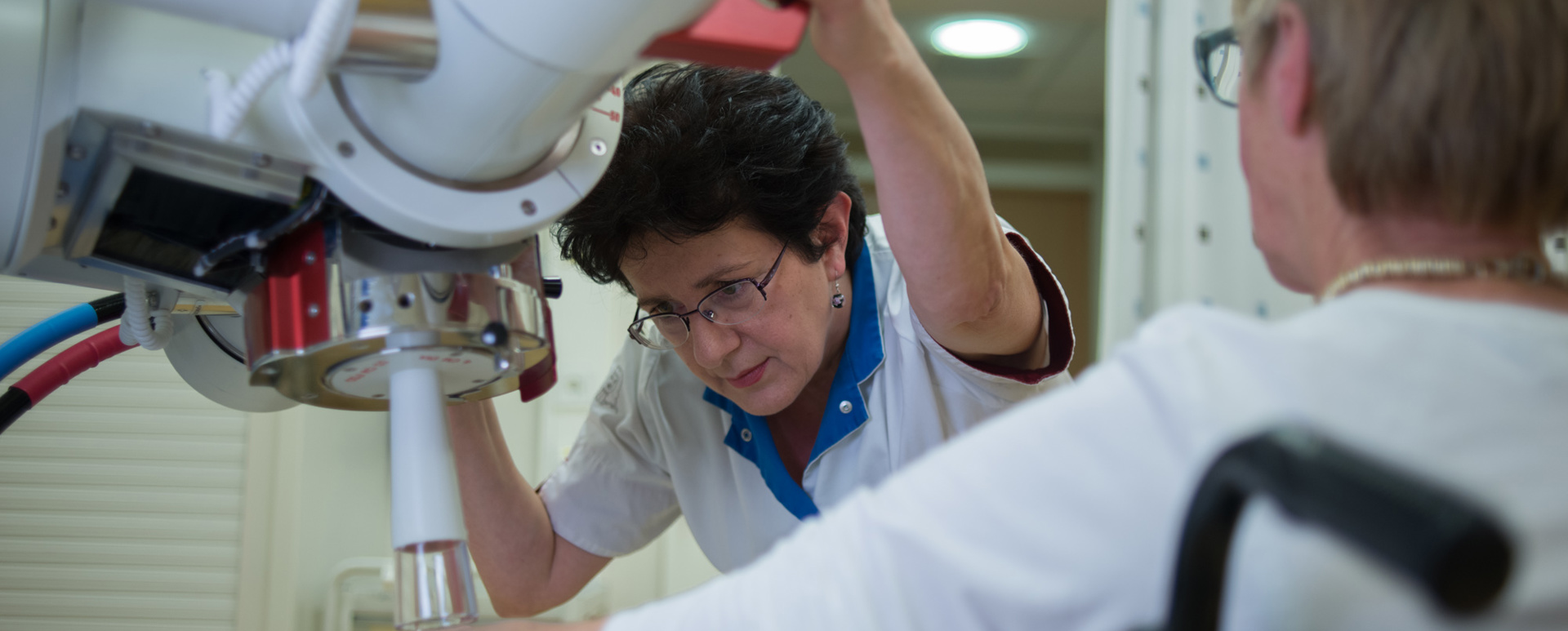Radiotherapy for skin cancer
Depending on the tumor type, location, size and stage, your specialists will discuss the best treatment for you. Superficial skin cancers like squamous cell carcinoma and basal cell carcinoma are treated with external beam radiation using Orthovoltage radiation. If the tumor has developed deeper into the skin, we will use LINAC instead.
External beam radiotherapy can be a curative treatment. Some people will need radiation after their surgery if there is reason to believe that cancer cells remain in the area. Radiotherapy can also be used as a palliative treatment to alleviate the symptoms.
Our working methods
Newest techniques and latest technological advancements
Our Radiation Oncology department is constantly working on the development of new techniques using the most advanced technology currently available - both in diagnostic imaging, preparation, and radiation itself. This allows us to deliver the most effective treatment possible to you, while sparing as much healthy tissue as possible.
Consultation with your radiation oncologist
You will meet with your radiation oncologist or physician addistant to discuss your situation and the treatment that best fits you, its goal, expected outcome preparation, execution, and side effects.
Your situation, test results and medical history will be discussed in a multidisciplinary team meeting consisting of specialists such as medical oncologists, surgeons, and radiation oncologists, in order to find the treatment that best fits you. Your radiation oncologist will discuss the results with you.
Research
We are constantly working to improve and develop radiation treatment through research. if your radiation oncologist knows of a trial that you may qualify for, he or she will let you know. You will receive more information to make an informed decision. Your participation is voluntary. if you decide not to participate, you will be treated according to the latest protocols and developments.
More information
Preparation
After meeting your radiation oncologist, we can start preparing for your treatment. If your tumor is in the head and neck region, we will need to prepare a special mask which helps us ensure that the proper area receives the radiation. That allows for increased precision. We will make your mask in the moulage room.
We may need to prepare a protective fitted shield out of lead to make sure that the surrounding tissue will not be damaged. We will make a cast in the moulage room in preparation.
Other people can directly come to our Orthovoltage machine. Your practicing physician will be present during your treatment sessions. Once the radiation field, the area receiving the treatment, has been determined, we will calculate your radiation treatment plan. Afterwards you will receive your first treatment.
If we opt to use our LINAC machine instead, we will need to make a CT scan in preparation for your radiotherapy. Once the computer planning is complete, your treatment can start. This will be a few days after the CT scan.
Radiation
Orthovoltage radiation treatment:
Radiotherapy lab technicians ensure that you are positioned correctly on the table. There's a cone connected to the radiation machine that will be placed on the area receiving the treatment. We will check whether the placement is correct. Once everything is in order, the lab technicians will head over to the control room where they can follow the radiation treatment on the monitors.
You will need 10 to 18 radiation sessions.
LINAC radiation:
We will ensure that you are positioned correctly on the table. Once everything is in order, the lab technicians will head over to the control room where they can follow the radiation treatment on the monitors.
You will need 20 to 33 radiation sessions.
You won't feel anything during the treatment. You will noticethe effects of the treatment later.
Palliative radiotherapy to alleviate symptoms will often be delivered in shorter sessions. These sessions may take up to 10 minutes.
Check-ups with your radiation oncologist
During your treatment you will regularly meet with your radiation oncologist to discuss the progress and ask any questions you may have. Your radiation oncologist will offer advice on how to deal with the side effects you are experiencing and prescribe medication if needed. You will also hear about the next step after your treatment.
Side effects
The side effects you will experience depend on your personal situation, overall shape and health, and the area that is receiving the treatment. Your practicing physician will discuss the side effects you can expect with you. Radiation on the skin may cause superficial wounds and moisture. The skin will recover after 2 weeks. These side effects may persist up to weeks after your treatment. Some side effects may be permanent. Your practicing physician will discuss the side effects you can expect with you.
What you can do
If your symptoms, situation, and overall health allow, we recommend daily exercise to improve your recovery. You could consider walking or biking, or exercise under the supervision of a physical therapist. We also recommend continuing your day to day activities as much as possible.
General nutritional guidelines apply during treatment.
Please consult your practicing physician if you wish to continue taking additional vitamins or supplements during your treatment.
Follow-up care
If you would like extra care during or after your treatment, please ask your radiation oncologist or physician assistant to the NKI Survivorship Center. Our physical therapists, occupational therapists, social workers, and psychologists are experienced in care for cancer patients and would love to offer additional support during and after your treatment.

 nl
nl
 Nederlands
Nederlands
